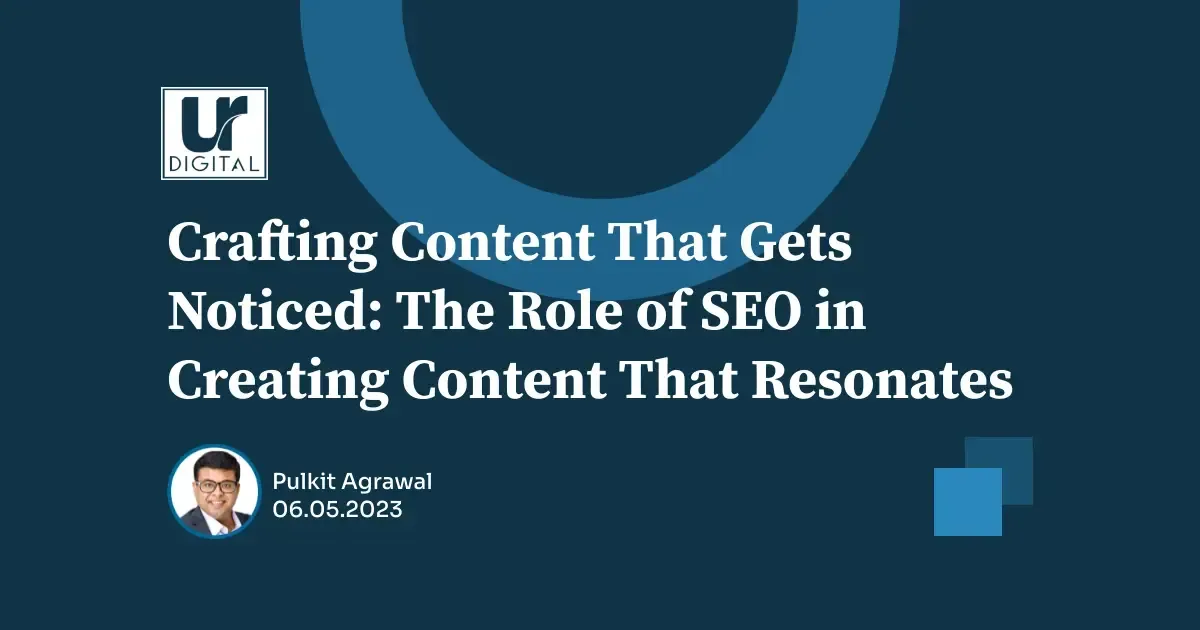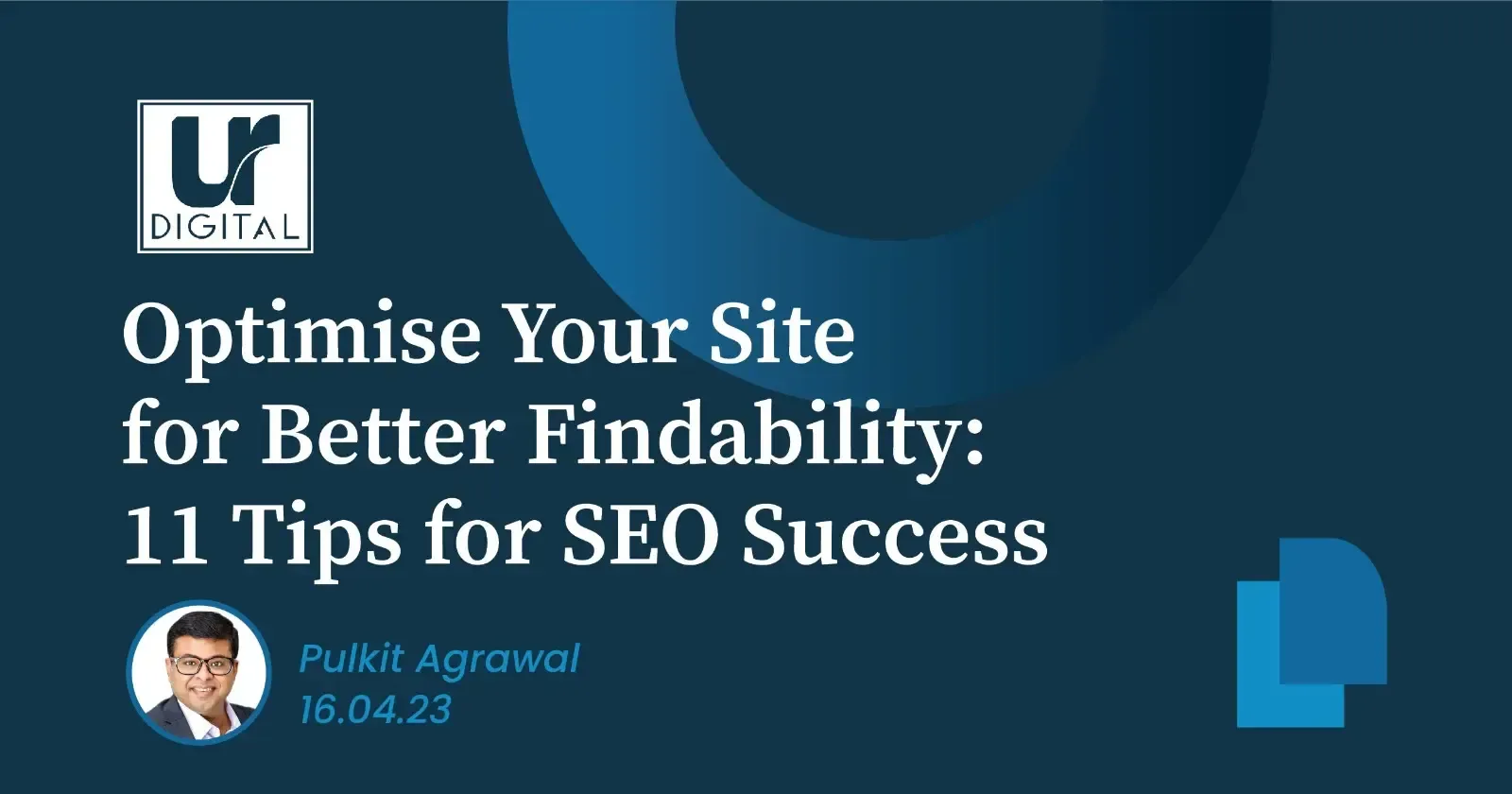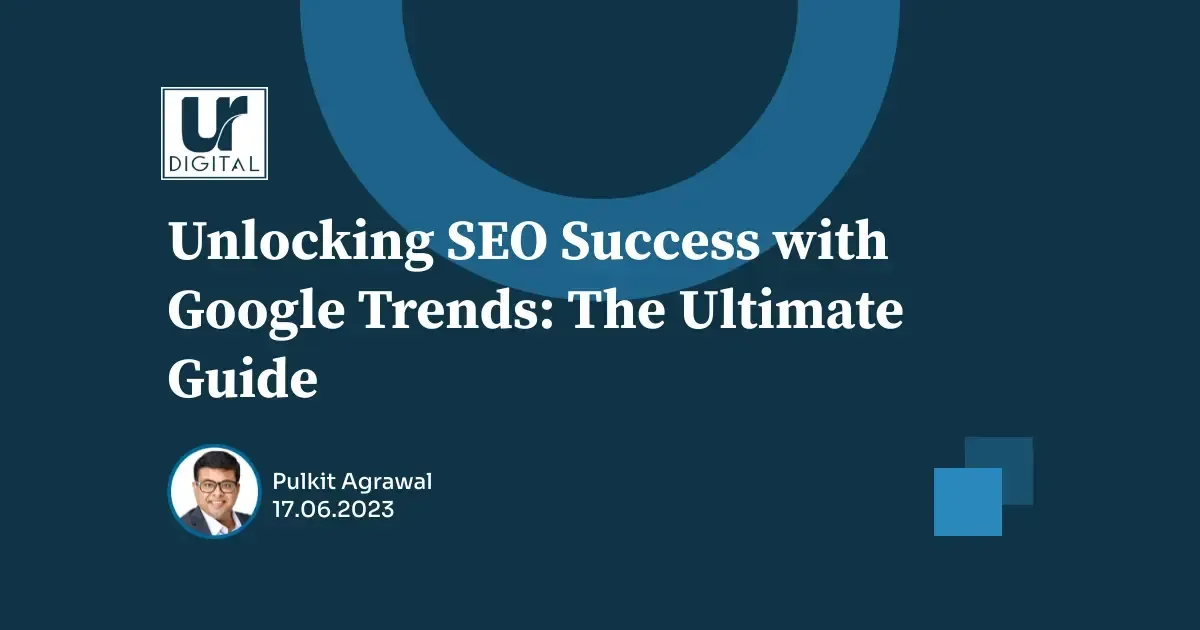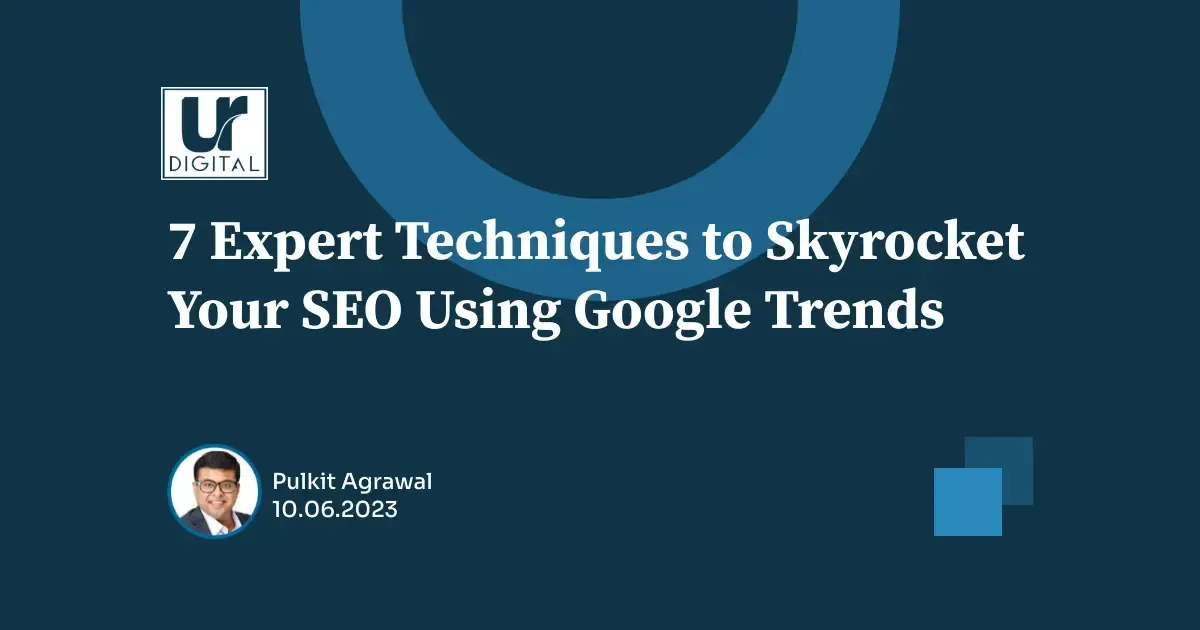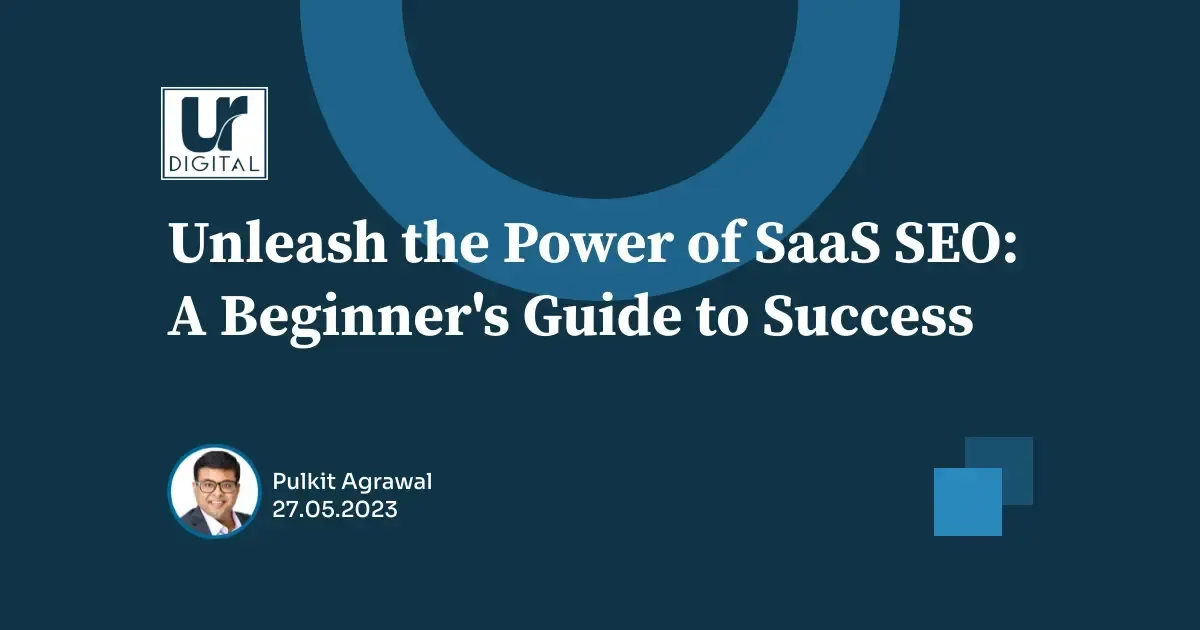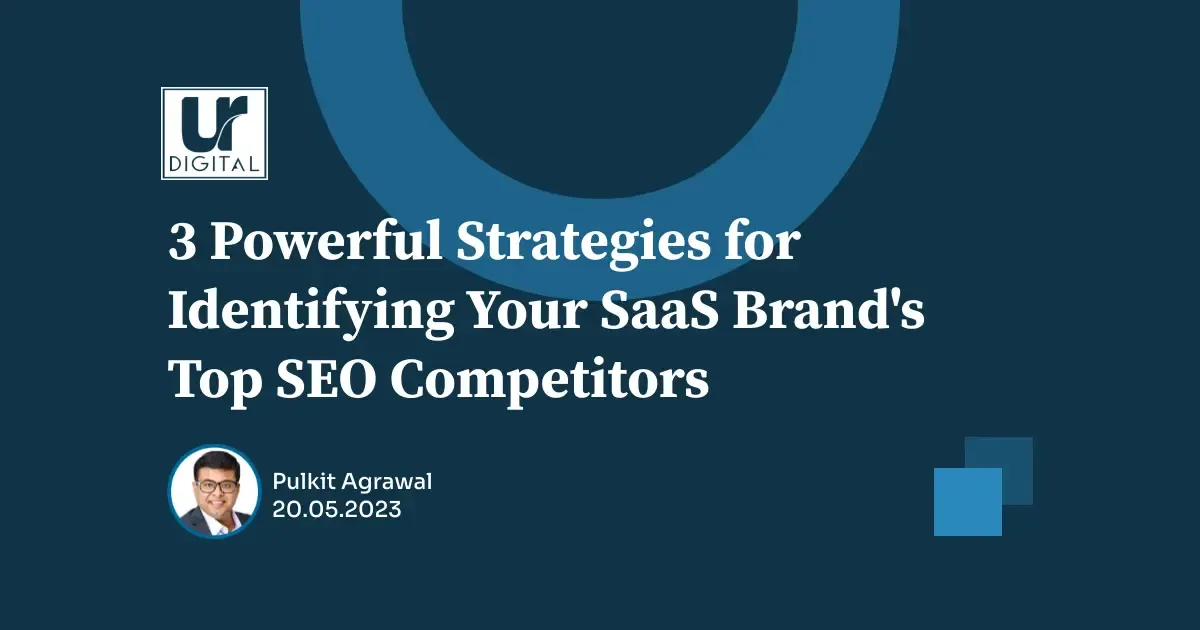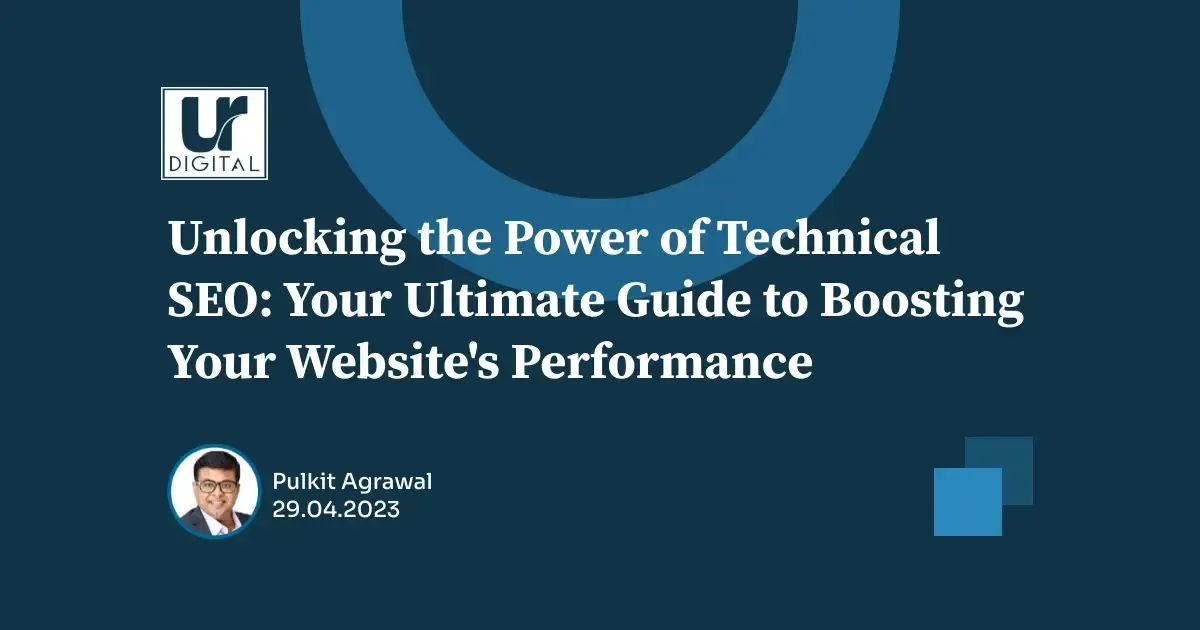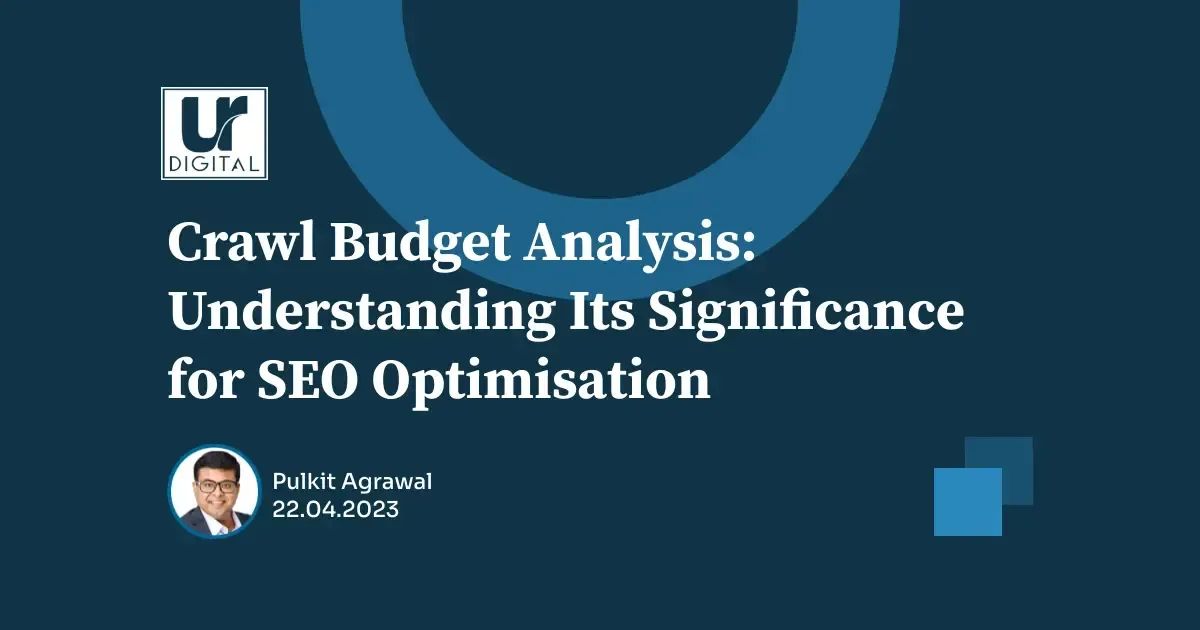10 Tips for Effective Search Engine Optimisation of Your Blog Content
Consider Sharing
As the world of digital marketing is constantly evolving, staying ahead of the competition can be challenging. SEO or Search Engine Optimisation is considered one of the most critical aspects of digital marketing. SEO refers to optimising your website or blog content to rank higher in search engine results pages (SERPs).
Searching for something on a search engine like Google or Bing uses complex algorithms to determine the most relevant and valuable results to show you. By doing website or blog SEO, you can make it more visible and accessible to search engines, increasing your chances of appearing at the top of search results. This can increase traffic, improve brand visibility, and generate higher revenue.
SEO for blogging involves various techniques, including keyword research, on-page optimisation, link building, and content creation. In this post, we'll share ten tips for effective search engine optimisation of your blog content.
10 Effective Tips for Blog SEO
1. Conduct Thorough Keyword Research

Keyword research is finding and selecting relevant keywords or phrases that people search for on search engines like Google. The purpose of keyword research is to identify the right keywords to optimise your blog content, ensuring your content is visible to your target audience.
The first step in conducting keyword research is to identify your target audience and the topics they are interested in. Use tools like Google Trends or BuzzSumo to determine the trending topics in your niche. Once you have a list of potential topics, research keywords using tools like Google Keyword Planner, Ahrefs, or SEMrush to find the right keywords.
When conducting keyword research, it's important to focus on long-tail keywords that are specific to your niche and have low competition. Long-tail keywords are more specific than generic ones and often have a higher conversion rate because they accurately reflect the user's intent. For example, a generic keyword like "car insurance" may have a high search volume, but a long-tail keyword like "affordable car insurance for new drivers" may have a lower search volume but a higher conversion rate.
Once you have identified your keywords, use them naturally throughout your blog post. Don't force keywords into your content, which can negatively impact your search engine rankings. Use keywords in your blog post title, meta description, headings, subheadings, and throughout your content.
By conducting thorough keyword research, you can optimise your blog content to attract the right audience, increase your visibility on search engines, and ultimately drive more traffic to your blog.
According to a survey by Hubspot, websites that include blogging in their marketing strategy have 434% more indexed pages than those that don't. This means blogs that use relevant keywords have a better chance of ranking higher in the SERPs and attracting more traffic.
2. Write High-Quality, Engaging Content

Writing high-quality, engaging content is crucial for effective SEO. Google and other search engines prioritise informative, useful, and engaging content. This means you must create content that adds value to your readers and addresses their pain points.
To create high-quality content, research your topic thoroughly and provide new insights that others haven't explored. Use reputable sources and data to support your claims, and ensure your content is accurate and up-to-date. It's also essential to write in a style that's easy to read and understand, using clear and concise language.
Tips for engaging your readers through your content-
- Create interesting and compelling content. Use storytelling techniques to make your content more relatable and memorable. Incorporate examples, anecdotes, and case studies to illustrate your points and make your content more engaging. Use visuals such as images, infographics, and videos to break up long paragraphs and make your content more visually appealing.
- Keep your content fresh and updated regularly. This keeps your readers engaged and signals to search engines that your blog is active and relevant.
Creating high-quality, engaging content can improve your blog's SEO and attract more readers.
3. Optimise Meta Tags and Descriptions

Meta tags and descriptions are HTML elements that provide information about your blog post to search engines. They appear in the search engine results pages (SERPs) and summarise your blog post. Optimising your meta tags and descriptions can improve your click-through rates and drive more blog traffic.
When optimising your meta tags, start with the title tag, which is the most important one. It should be between 50-60 characters and include your primary keyword. Remember that the title tag is what users will see in their search results, so it should be engaging and accurately represent your blog post.
The meta description tag should be no more than 155-160 characters. Use this space to entice users to click through to your blog post. Incorporate your primary keyword and provide a clear and concise summary of what users can expect to find in your post.
Ensuring each meta tag and description is unique for each blog post is essential. Avoid using duplicate meta tags and descriptions, which can harm your SEO efforts.
It's also important to note that Google often uses meta tags and descriptions as the default if no other information is available. Therefore, optimising your meta tags and descriptions for every blog post is crucial to ensure your content is displayed accurately in search results.
If using WordPress as your CMS or blogging platform, you can use a plugin like
Yoast SEO or
All in One SEO Pack to optimise your meta tags and descriptions. These plugins provide helpful tips and guidance on how to optimise your meta tags and descriptions for better SEO performance.
4. Use Header Tags Appropriately

Header tags, also known as heading tags or H-tags, are HTML elements that organise and structure your content. There are six levels of header tags, ranging from H1 (the most important) to H6 (the least important). H1 is typically reserved for the title of your blog post, and H2-H6 are used to structure the content beneath it.
Using header tags appropriately is crucial for effective SEO. It signals to search engines the structure and hierarchy of your content, making it easier for them to crawl and understand your page. Additionally, using header tags appropriately makes your content more scannable and easier to read for users.
Here are some guidelines for using header tags effectively:
- Use only one H1 tag for your blog post title. It should be descriptive, concise, and incorporate your focus keyword.
- Use H2 tags to break up your content into main sections. Each section should be relevant to the topic and include relevant keywords where it makes sense.
- Use H3 tags to break up your H2 sections into subsections. This further organises your content and makes it easier for readers to navigate.
- Avoid skipping header levels (e.g., using H2 after H4). It can confuse search engines and make your content harder to understand.
- Don't overuse header tags. Using too many H2 or H3 tags can make your content look spammy and negatively impact your SEO.
5. Implement Internal and External Linking Strategies

Internal and external linking are two essential aspects of SEO for blogs. Internal linking refers to linking to other pages within your website, while external linking refers to linking to other relevant and authoritative websites. According to a study by Ahrefs, there's a clear correlation between the number of referring domains (websites with backlinks to your blog) and the amount of traffic a blog receives.
Internal linking is an effective strategy for keeping readers on your site longer and improving user experience. By linking to other relevant blog posts or pages within your website, you can guide your readers to explore more of your content. Internal linking can also help search engines understand the hierarchy and structure of your website, which can positively impact your search engine rankings. When creating internal links, ensure that the linked pages are relevant and provide additional value to the reader.
External linking, on the other hand, can improve your blog's credibility and authority. By linking to other high-quality and trustworthy websites, you can signal to search engines that your content is relevant and valuable. External links can also give your readers additional resources and information to enhance their understanding of your topic. However, it's important to ensure that the external links you're using are relevant and trustworthy, and provide value to your readers.
When implementing internal and external linking strategies, ensuring that your links are natural and relevant is crucial. Avoid using too many links, which can negatively impact the user experience and appear spammy to search engines. Ensure your links are placed strategically within your content and add value to the reader's experience. Incorporating effective internal and external linking strategies can improve your blog's authority, user experience, and search engine rankings.
6. Optimise Images and Alt Text

Images are an important aspect of blogging, as they can make your blog content more visually appealing and engaging. However, if not optimised properly, images can also slow down your page load speed, negatively impacting your search engine rankings and user experience. Therefore, optimising your images and using alt text is essential for effective SEO for your blog.
Choosing the right file format and compression for your images is important. JPEG is the most commonly used format for photographs, while PNG is typically used for images with transparency or graphics. Compression reduces the image's file size, but be careful not to compress it too much, as this can reduce the image quality.
In addition to optimising the file format and compression, you should use descriptive file names for your images. This helps search engines understand what your image is about and makes it easier for you to organise your image library.
Alt text is a description of your image that appears when the image cannot be displayed, either because the user has disabled images or because of an error in loading. Alt text is essential for accessibility, as it allows visually impaired users to understand what the image is about. Additionally, alt text can also improve your SEO by providing search engines with more information about your content.
When writing alt text, be sure to describe the image accurately and use relevant keywords where appropriate. Avoid using generic phrases like "image of" or "picture of," and instead provide a brief but descriptive summary of the image. This helps search engines understand the context of the image and its relevance to the content of your blog post.
Overall, optimising your images and using alt text is an important aspect of SEO for your blog.
7. Improve Page Load Speed

Page load speed is a critical factor in user experience and SEO. Slow-loading pages can lead to higher bounce rates and negatively impact your search engine rankings. Here are some tips to improve your page load speed:
- Use a Fast and Reliable Web Hosting Service: A fast and reliable web hosting service can significantly improve your page load speed. Choose a hosting service with reliable uptime, speedy server response times, and high bandwidth.
- Optimise Images: Large images can slow down your page load speed. Optimise your images by compressing them, choosing the right file format, and using descriptive names. Use image optimisation tools such as TinyPNG, Kraken.io, or Adobe Photoshop to reduce the file size of your images without sacrificing quality. Converting your images to WebP is a great way to compress and optimise the images.
- Minimise Redirects: Redirects can add extra loading time to your pages. Minimise the number of redirects by updating outdated links and using permanent 301 redirects instead of temporary 302 redirects.
- Use Browser Caching: Browser caching stores frequently requested resources such as images and CSS files on the user's computer, reducing the number of requests to the server and improving page load speed. Enable browser caching by adding expiration headers to your resources.
- Minimise CSS and JavaScript Files: Large CSS and JavaScript files can slow your page load speed. Minimise these files by removing unused code, reducing whitespace, and using minification tools such as Minify or Closure Compiler.
- Use Content Delivery Networks (CDNs): CDNs distribute your content across multiple servers globally, reducing the distance the data needs to travel and improving page load speed. Some popular CDNs include Cloudflare, Amazon CloudFront, and Akamai.
- Test Your Page Load Speed:
Use tools such as
Google PageSpeed Insights,
GTmetrix, or
WebPageTest to test your page load speed and identify any issues that need to be addressed. These tools recommend improving your page load speed and overall user experience.
Pro-Tip: When doing speed tests using WebPageTest or GTmetrix ensure the location and connection is set to mimic your end customer.
8. Implement Schema Markup
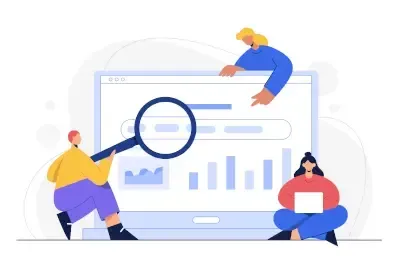
Schema markup is a form of microdata that helps search engines better understand the content of your website. It provides additional information about your website or blog post beyond the basic text on your webpage. Implementing schema markup can help your content appear more prominently in search engine results pages (SERPs) and improve click-through rates.
Schema markup can be used for various types of content, including articles, events, reviews, products, and more. Various schema markup types are available, and choosing the appropriate schema types for your content is essential. To determine which schema type to use, consider the nature of your content and what information you want to convey to search engines.
For example, if you're writing a blog post about a recipe, you can use schema markup to provide additional information, such as the ingredients, cooking time, and nutritional information. This information can be displayed on the search results page, giving users more information about your content and increasing the likelihood of them clicking through to your website.
Implementing schema markup requires adding additional HTML tags to your website's code. Various tools can help you implement schema markup, including Google's Structured Data Markup Helper and Schema.org. Once you've implemented schema markup, it's essential to test it using Google's Structured Data Testing Tool to ensure that it's been implemented correctly.
In addition to improving your search engine visibility, implementing schema markup can also enhance your website's appearance in search engine results in pages. By providing additional information about your content, schema markup can make your search listing more attractive and engaging to users, increasing the likelihood of them clicking through to your website.
9. Utilise Social Media to Boost Visibility

Social media can be a powerful tool to boost the visibility of your blog content and improve its SEO. By promoting your blog posts on social media platforms, you can increase the reach of your content and attract more traffic to your website.
According to SEMrush, social media is the most popular content marketing tactic, with 73% of marketers using it to promote their content.
Here are some strategies for utilising social media to boost your blog's visibility:
- Identify the right social media platforms: Not all platforms are created equal. Each platform has its strengths and weaknesses, and choosing the platforms most relevant to your target audience is essential. For example, if your target audience is primarily B2B professionals, LinkedIn may be a more effective platform than Instagram.
- Share your blog posts on social media: When you publish a new post, share it on your social media channels. Use a catchy headline and a visually appealing image to grab your audience's attention. You can also use social media scheduling tools like Hootsuite or Buffer to schedule your posts in advance.
- Engage with your audience: Social media is a two-way conversation; engaging with your audience is essential. Respond to comments and messages promptly, and use social media to ask for feedback and opinions. Engaging with your audience not only builds trust and loyalty but also increases the visibility of your content.
- Leverage hashtags: Hashtags are a powerful tool for increasing the reach of your social media posts. Use relevant hashtags in your posts to make them more discoverable to users who are interested in your topic. You can also create branded hashtags to encourage user-generated content and increase brand awareness.
- Collaborate with influencers: Influencer marketing can effectively reach a wider audience and boost the visibility of your blog content. Identify influencers in your niche with a large following and engage with your target audience. Reach out to them to collaborate on content or sponsorships.
- Monitor social media metrics: To measure the effectiveness of your social media strategy, it's essential to monitor your social media metrics. Tools like Google Analytics or social media analytics platforms provide insights into your audience's behaviour, engagement, and conversions. Use these insights to adjust your social media strategy and improve your blog's visibility.
10. Monitor and Analyse SEO Performance

Monitoring and analysing your SEO performance is crucial to improving your blog's visibility and traffic. Use tools like Google Analytics and Google Search Console to track your SEO performance. These tools provide insights into various metrics, such as search queries, click-through rates, bounce rates, and page views.
Start by identifying your top-performing blog posts and analysing the keywords and strategies that made them successful. Identify the areas where your blog needs improvement and create a plan to implement changes. Regularly monitor your blog's SEO performance and track your progress towards your goals.
When analysing your SEO performance, focus on the following metrics:
- Organic Search Traffic: Organic search traffic refers to the number of visitors who found your blog through search engines. It's a critical metric indicating how well your blog content ranks in SERPs.
- Click-Through Rate (CTR): CTR is the percentage of users who click on your blog post after seeing it in search results. A higher CTR means your meta tags and descriptions are engaging and relevant to users.
- Bounce Rate: The bounce rate is the percentage of users who leave your website after viewing only one page. A high bounce rate indicates your content isn't engaging or relevant to users.
- Page Load Speed: Page load speed is the time it takes for your blog post to load. Slow-loading pages negatively impact user experience and search engine rankings.
- Backlinks: Backlinks are links from other websites that lead to your blog post. They indicate the authority and credibility of your content.
Once you've analysed your SEO performance, create a plan to improve your weak areas. Focus on optimising your blog content and implementing new SEO strategies. Remember that SEO is an ongoing process; continuous improvement is necessary to stay competitive in search engine rankings.
Conclusion
In conclusion, effective search engine optimisation (SEO) is essential to the success of any blog. Implementing the ten tips discussed in this article can improve your blog's search visibility, attract more readers, and engage your target audience. From conducting thorough keyword research to optimising images and alt text, these tips provide a solid foundation for creating high-quality, informative, and engaging content that resonates with your readers and ranks well in search engines. Remember that SEO is an ongoing process that requires continuous improvement and adjustments.
Keep track of your progress, analyse your SEO metrics, and make changes to ensure your blog stays ahead of the competition. By following these tips and staying updated with the latest SEO best practices, you can take your blog to the next level and achieve your goals of driving more traffic, building a loyal readership, and establishing yourself as an authority in your niche. So, implement these tips, and watch your blog soar to new heights!
Author
PULKIT
AGRAWAL
FOUNDER & MANAGING DIRECTOR
Profile
My name is Pulkit Agrawal and I'm the Founder and Managing Director of
UR Digital. I invest my soul and imagination into every client. I have worked across many industries, over the past 15 years and countless highly successful SEO projects and campaigns.
Skills and Achievements
Multi-lingual SEO (English, German, Cantonese, Mandarin and Japanese). Google, Semrush, BEC Australia and LinkedIn certified. Member Entrepreneur Leadership Network. Guest Author Entrepreneur, Semrush & Inside Small Business.
Connect with me on
Consider Sharing
